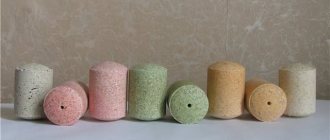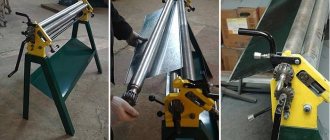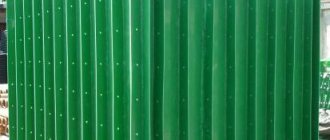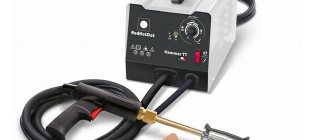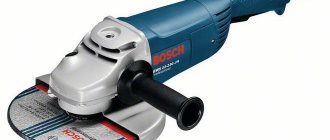In the realities of household craftsmanship, there are not only homemade products, but also tools for their manufacture. A top-class craftsman with extensive experience in handicrafts can even make a tool, which will later be used to create another masterpiece.
Sometimes this happens because buying new equipment from a store can often be expensive. In addition, the master, as a man of art and creativity, himself is not averse to once again testing his skills and making something that will serve him faithfully for a very long time.
Do-it-yourself hydraulic presses can really be a faithful assistant.
Some parts require flat pressure on them to give them a certain shape or degree of strength. This requires a hydraulic press.
Here are all the nuances and recommendations for making it yourself. You can find photos of your own press on the Internet.
Press design
The hydraulic press itself is equipment designed to create high pressure on parts. It can be measured in a range of values from several tons to thousands of tons.
The structure of a hydraulic press implies the presence of a small and large cylinder. The cylinders can be positioned horizontally, but in most cases they have a vertical position.
The operating principle of the device comes down to Pascal's law. Fluid from one cylinder creates pressure, which creates movement and pressure in the other. Another cylinder acts on the piston, which in turn transmits pressure to the tool in contact with the part.
Hydraulic press: drawings and designs
For home use, a press that creates a force of 15-25 tons or less is sufficient - it depends on the required tasks. In addition to effort, this device has the following basic criteria:
- weight;
- dimensions;
- bed performance characteristics;
- presence of a pressure gauge;
- piston stroke.
In the working cylinder, a separate manual or built-in hydraulic pump is usually used to create pressure. This will depend on the choice of equipment for assembling the press. The simplest, easily manufactured version of the press is a design based on a bottle-type hydraulic jack with a built-in hand pump.
Before you start assembling a hydraulic press with your own hands, you need to decide for what needs it will be used and, naturally, what force it needs. Then you need to select and buy the required jack, if it is used in the manufacture of the press.
The next, most important stage is creating a drawing of the assembled press. All drawings offered on the Internet for the manufacture of a hydraulic press are developed and made on the basis of existing hydraulic equipment and metal materials. Therefore, if you strictly follow other people’s diagrams, then making a press with your own hands can take forever and will consist of adjustment and alteration, based on the diagram for a purchased hydraulic jack.
When making a drawing, you first need to select a diagram of the equipment operation:
- the jack is fixed on top of the frame and presses downwards;
- The jack is located on the base of the frame and presses upward.
Moreover, we should not forget that for manufactured jacks the normal working position, which is provided by the factory, is vertical, with the output rod up. The jack must not be turned over!
Most often the second option is chosen. The first is more convenient for certain types of work, for example, for pressing bearings out of some parts or bushings.
Press drawing design
the press will begin to press up and down simultaneously.
The height is summed up from the dimensions of the jack, the required free movement of its rod, the height of the parts intended for pressing and the thickness of the mobile work table. In the second work scheme, the jack is attached to the base, and the top of the frame serves as a stop for the products. The pressure from the rod is transferred to the part using a movable work table. It is installed on top of the jack on the frame, along which it must move freely up and down, held by guides on the sides.
Springs are attached to both sides of the jack: one eye to the base of the frame, and the other to the movable table. Their purpose is to compress the jack to its original state, when the rod does not protrude (the size and stiffness of the springs are selected appropriately). You can also make an option when a mandrel-shaped device is put on the rod, where one eye is attached, and the other is attached to the base.
The first scheme of the press operation implies that the support for the products will be the base of the frame, and the jack is attached to a movable table suspended from the top of the frame on springs. In two schemes, a socket is made at the interface unit under the base of the jack rod. This may be a small piece of pipe of the appropriate diameter.
To regulate the free movement of the jack rod and, naturally, the height of the workpieces, the following solutions are possible:
- provide for the installation of replaceable inserts-linings made of a hollow or solid metal profile;
- make a removable stop in the form of a movable work table, which can be fixed to the frame with rods or nuts and bolts. To do this, holes are made in the frame with a distance in height less than the movement of the jack rod;
- A screw drive with a steering wheel is installed on top of the frame. By tightening the screw with the plate at the end, you can reduce the clearance for products inside the frame;
- combined use of the above options.
All dimensions in the project must be indicated taking into account the dimensions of the pressing objects, the jack, as well as the dimensions of the intended rolled metal for use during the manufacture of the press with your own hands.
How to use a press at home
The use of a hydraulic press at home is quite popular. As a rule, it is located in the garage and is used for completely different purposes. With its help, you can adjust the dimensions of parts for cars, as well as other household parts, such as bearings and silent blocks.
A press can bend, shape and flatten any metal part. It is suitable for gluing surfaces and briquetting waste. Or, for example, an apple press, as well as a do-it-yourself squeeze press.
As already noted, many simply cannot afford to purchase new professional equipment. Moreover, this is not always necessary.
A hand-made press will not take up much space, and its functionality can be adjusted to suit you, depending on your goals.
Do-it-yourself hydraulic press repair using a jack
To maintain the long-term performance of a hydraulic press made on the basis of a jack, a homemade device requires proper operation and maintenance. During operation, it is necessary to monitor the oil level in the hydraulic cylinder, lubricate moving parts, check the condition of sealing joints, and the reliability of fastening of assembly elements.
To maintain the operation of the press, it is necessary to monitor the oil level in the hydraulic cylinder, check the reliability of fastening of the elements and lubricate the moving parts
However, any mechanism can malfunction, which is the cause of improper operation or wear of individual structural elements. If the hydraulic garage press you created yourself has stopped or does not start, you should check the oil level in the hydraulic cylinder. If its volume is insufficient, you will need to fill the container and then pump the jack.
If there is a liquid leak, this indicates mechanical damage to the structure or breakdown of its individual elements. To eliminate the defect, it is necessary to disassemble the jack and check all its parts for corrosion damage. The rod is inspected for any deformations. Damaged elements should be replaced with new ones. The operating oil must be completely drained. The internal cavity of the jack and all its elements are washed with kerosene and dried. Old sealing gaskets and cuffs must be replaced with new ones.
Other problems when operating a home-made hydraulic cylinder press
If there is an insufficient level of force from a hand-made hydraulic press, or the mechanism operates intermittently, this problem is associated with the possible entry of air into the cavity of the jack, which negatively affects the operation of the piston. To eliminate the damage, working fluid should be added to the cylinder by removing air through the tubes.
The low pressure of the mechanism is explained by damage to the valve, which has moved away from the compartments, become dirty, or has weakened springs. In the first two cases, the element is repaired or replaced. The valve is cleaned using a damp cloth and then drying the element. In case of severe contamination, the mechanism is washed with kerosene or gasoline and dried with compressed air. If the reason lies in the wear of the springs, they must be replaced with new elements.
When air enters the cavity of the jack, an insufficient level of press pressure is observed
After disassembling the jack for repair work, the mechanism must be reassembled under certain conditions. The valves must fit snugly into the seats. It is necessary that there is a sufficient amount of fluid in the hydraulic cylinder. There should be no air in the system.
A hydraulic press is a multifunctional universal equipment that can be used to solve various problems where effort is required. The tool can be purchased at a specialized store or you can make a press yourself from a hydraulic jack, which will save money
To do this, it is important to choose the right material and adhere to the algorithm for assembling the elements.
Press structure
A press made at home does not require high technological indicators. As noted above, it is used to create and correct simple and small parts or simple operations. Based on this, home presses, as a rule, have a force of no more than 20 tons.
However, the parameters by which presses are classified are suitable for both production models and those made independently.
These parameters include:
- Equipment geometric values;
- Press weight;
- Piston amplitude;
- Availability of a pressure gauge;
- View of the bed.


